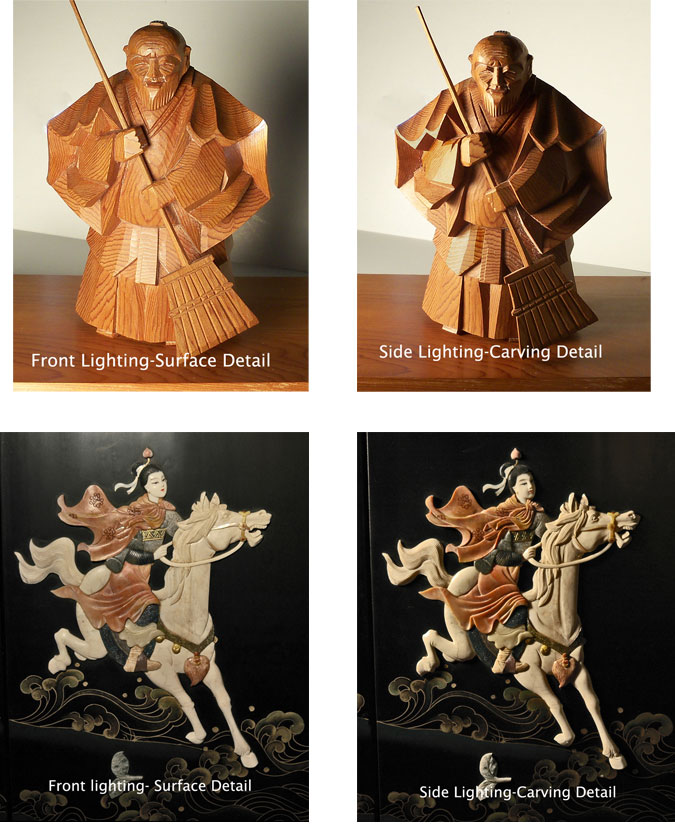
Creating an illusion of depth to define a three dimensional object on a two dimensional surface (piece of paper, computer monitor) can be done by using shadows. Shadows are created when the surface is irregular and blocks part of a directed light beam. We see shadows on a bright sunny day but none on an overcast day. The sun is essentially a point source of light and directs its rays in straight lines but on a cloudy day the rays are scattered by the overcast.
We can use this principal in photography by directing a beam of light to skim along the surface of a three dimensional object thereby casting shadows. To work effectively the source must be an open light bulb or a flash unit without a diffuser and aimed toward the subject. The classic example is a white ball being lighted from the front with the result the ball looks flat. When the light is moved to one side that half is bright and the other side, with a gradual transition, is in the shadow making the ball appear three dimensional.
Four images are used to illustrate the effectiveness of side lighting. The carved figure of the Japanese street sweeper is shown with front lighting revealing grain detail but lacking in depth. When the light is moved to the side the deep carvings are revealed showing the figure in three dimensions. Without the shadows the carving appears more two dimensional and less dramatic. Shadowing across the face reveals character.
The other set of images are from an inlaid Chinese screen. The Chinese horse rider when front lit appears to be flat with some minor relief. But when lighted from the side the depth of the carving makes a dramatic presentation.
All of which brings us to using on-camera flash. What we get is shown by the front lit figures, pictures of low contrast without much feeling of three dimensionality. Portraits are particularly vulnerable to this kind of lighting. If that is all that is available a poor picture may be better than no picture but if conditions permit use side lighting. A study of the classic painters reveals their mastery of light and interestingly there seemed to be a preference for light streaming from upper left going down to the right. We learn by observing.





























































